Never just for camping, a camping stove is great for tailgate parties, grills, canning, or even packed away as part of your emergency kit! Depending on whether you need one for lone hiking, or one that will feed all the family and friends, there is a stove for all these needs and more.
In this article, we review ten of the best camping stoves to help you to find the best one for you. We discuss some of the things to think about when choosing a stove, such as the size, its efficiency and heat output, and even whether it has matchless ignition. We also offer some practical advice such as working out how much propane you may need for your trip and how you can save some money by investing in refillable propane tanks or even a new regulator so you can use larger tanks.Quick Comparison: Top 10 Best Camping Stove
1. Camp Chef Explorer Double Burner Stove
The Camp Chef Explorer double burner stove has a total output of 60,000 BTUs (British Thermal Units) per hour. This stove has cast aluminum burners and the addition of its detachable legs raise its cooking height to 32". The legs are also adjustable for when cooking on uneven ground. This camping stove is screened on three sides for protection from wind and comes with a 3 ft. hose and regulator. When fitted with a 20 lbs. propane tank, it will provide up to 15 hours cooking time.
Weighing 30.5 lbs. and measuring 34" high by 16.25" long and 9.5" deep, this stove has a total cooking area of 14" by 32" and is also compatible with a range of 14" accessories from the manufacturer. This stove comes with a one year limited warranty.
Although the legs are detachable on the stove, you cannot use it without the legs (i.e. on the ground) due to the positioning of the regulator, and the legs do only allow for minor height adjustments. The odd owner has commented that they consider the heat output on this to be lower than expected and it can be prone to leaving black marks on pans. There can also be a risk of receiving the legs with cosmetic damage.
Pros
Cons
2. Coleman Two Burner Propane Stove
With a total of 20,000 BTUs, the Coleman two burner propane stove utilizes PerfectHeat technology for more efficient cooking using less fuel. This has two temperature zones as both burners are independently adjustable, and it can fit a 10" and a 12" pan at the same time. The stovetop is made from aluminized steel for rust resistance and the chrome plated grate can be removed for cleaning. It also has three wind block panels.
A 16.4 oz (1 lbs.) propane tank will give an hour’s burn with both burners on high and this also incorporates pressure control technology (PerfectFlow), which will still work with low fuel, higher altitudes and cold weather. This comes with a regulator for the small tanks, but if you want to connect it to a 20 lbs. tank you will need to buy some extra kit to do so safely.
Some buyers have found this to have a poorer build than would be expected from this manufacturer and you may want to check it thoroughly on arrival as there can also be a risk of some missing parts. There can be some difficulty in adjusting the burners on this. This burner comes with a Prop65 warning for residents of California.Pros
Cons
3. Coleman Bottle Top Propane Camp Stove
The burner and large base of the Coleman bottle top propane stove separate for easy storage and travel, and then assemble onto the propane tank. This stove has an output of up to 10,000 BTUs and its adjustable burner will fit an 8" pan.
This is a PerfectHeat stove which means it can offer more efficient cooking when using less fuel, and this will run on high for up to two and a half hours on a 1 lbs. propane tank. This also comes with a three year limited warranty from the manufacturer and if you are a resident of California, it also has a Prop65 warning.
This stove has preset settings for gas flow rather than manual control and the odd owner has been concerned about the durability of the valve assembly. The lowest heat setting on this may also be too hot when using smaller pans, and, due to its design, it can be more unstable than other types of stoves depending on the terrain and weight of pot/pan on the stove.Pros
Cons
4. Camp Chef Everest Two Burner Stove
With a total output of up to 40,000 BTUs, the Camp Chef Everest two burner stove is a lighter weight stove, weighing 12 lbs. (without propane) with a carry handle and locking lid. Measuring 13.5" long by 23.5" wide by 4" high, this stove has a matchless ignition, adjustable heat controls and a stainless steel drip tray for easy cleaning.
This comes with the regulator adapter for a 1 lbs. propane tank; if you want to use a larger tank you will need to buy an adapter. This also has a wind barrier and comes with a one year limited warranty from the manufacturer. Some buyers have been concerned with the quality control of this stove as they have received them damaged or found that the different parts will not align with each other as they should do. This model may not be as robust as similar types of stoves and its lifespan could be longer.
Pros
Cons
5. GAS ONE Dual Fuel Portable Camping Stove
Able to operate on an 8 oz butane or 1 lbs. propane tank, the GAS ONE dual fuel portable stove (GS-3400P) also includes modified built in regulator for both types of tank. This has a matchless ignition and adjustable heat dial for its single burner, and its output is up to 8,000 BTUs.
This also comes with a portable carry case and amongst its safety features, it has a cartridge ejection system that will eject the butane cannister if irregular flow or pressure is detected. The odd buyer has found this may not work as well as other camping stoves at altitude and there have been occasional failures on the regulator valve. This stove may also lack durability when using frequently.
Pros
Cons
6. Coleman PowerPack Propane Stove
The single burner Coleman PowerPack propane stove is a portable stove with an output of up to 7,500 BTUs. This stove can fit a pan sized up to 12" and will run for up to three hours on high from a 1 lbs. propane tank. This comes with a lifetime limited warranty from the manufacturer.
This is an aluminized steel cooktop with a chrome plated grate which is removable for cleaning. The burner is also fully adjustable and the PerfectFlow system allows cooking to remain consistent even at altitude, in cold weather or when the propane is low.
If you want to connect it to a different tank you will need to buy an additional regulator, and this requires manual lighting and neither does it come with a wind block. The feet of the stove are also removeable, so you will need to take extra care that these do not get lost when transporting the stove.Pros
Cons
7. Coleman Triton Stove
Able to take a 10" and a 12" pan at the same time, the Coleman Triton stove has a total output of up to 22,000 BTUs. This can also fit a griddle, which you will have to buy separately, but the Triton has room to stow the griddle. This has wind blocks which are adjustable for cooking with larger pans and the PerfectFlow pressure technology maintains steady heat, even when the conditions are more extreme.
This runs off a 1 lbs. propane bottle, but you can buy an adapter to run a larger or refilled tanks. The chrome plated grate is also removeable. There is some confusion as to whether this has matchless ignition, however this model is currently a manual lighting model, and a number of buyers have been disappointed to receive this without the electronic ignition. It may also be difficult to regulate the heat on this and it may be burning too hot depending on what you are cooking. This also has a Prop65 warning for Californian residents.
Pros
Cons
8. CANWAY Portable Wood Burning Stove
The CANWAY portable wood burning stove is compact and lightweight stove that collapses down to 5.5" by 5.5" by 3.38" and packs into a storage bag. Constructed from high quality stainless steel, this stove has a high thermal efficiency and will burn for 20 minutes with dry wood.
This stove is designed so that fuel can be added without having to remove the stove top pot holder or pan. It also comes with a two year limited warranty from the manufacturer. The odd owner considers this is too small and that the pot holders could be sturdier or designed in a better way. As this is a wood fuel stove, the output can be inconsistent, and some users have also found the output can be sooty.
Pros
Cons
9. Coleman Triton + Portable Propane Gas Camp Stove
With dual burners and an output of up to 22,000 BTUs, the Coleman Triton+ camp stove also has matchless ignition. This stove is available in two colors and utilizes pressure control technology for consistent heat output. This is an aluminum stovetop with a chrome plated grate that can be removed when you need to clean it. This also comes with a three year limited warranty from the manufacturer.
Both burners have adjustable temperature control and it comes with wind block panels and a heavy duty clasp for transporting it. Able to take up to a 10" and a 12" pan, this runs off a 1 lbs. propane tank, or you can buy a separate adapter to fit larger tanks.
There may be some minor quality control issues with this stove when you receive it and as the odd buyer has found that the regulator will not fit into the stove, you may want to test this fully before taking it on your trip. As with a number of camping stoves, it can also be difficult to adjust the burner temperature.Pros
Cons
10. Camp Chef Tahoe Deluxe 3 Burner Grill
With an output of up to 90,000 BTUs per hour, the Camp Chef Tahoe three burner grill has fully adjustable temperature controls for each burner. The burners are cast aluminum and offer a total cooking area of 608 square inches. You can also buy additional 16" cooking accessories from the manufacturer.
The cooking height is 30" and the detachable legs can be adjusted for uneven surfaces. This also has a wind block, matchless ignition and comes with a hose and regulator for fitting to a 20 lbs. propane tank. As with any stove, it is worth you assembling it and testing it before your trip as there can be a small risk of receiving one with defective or missing parts and even though there is a wind block, there can be a risk of the burners going out if they are running on low – especially if there is some wind.
Pros
Cons
Things to Consider Before Buying A Camping Stove
Size and Weight Considerations
If you are looking for stove for outdoor grills or for tailgate parties, then the size and weight of the stove will rarely be an issue. Important things to think about are how many people the stove will need to cook for, and how/what sort of cooking will be done.
Stoves that are freestanding are usually larger stoves with two or three burners. These offer more freedom in that they can be placed anywhere, and many will have a larger cooking surface for taking bigger pots as well as other accessories such as grill plates or griddles. Freestanding stoves are also more accommodating for stockpots if you want to use a camping stove for extra space when canning or for deep frying. Some freestanding stoves can be used without the legs, but even if not, the legs usually detach for easy transporting and storage.
Tabletop models will need to be either set up on a table, tailgate or the ground. Available from one to three burners, a compact two burner stove is usually enough for four people camping for a few days. A single burner can be enough for two people as long as cooking is kept to very basic and fast meals.
If you are looking for a stove to take hiking, then the lighter and smaller the better, as you will also need to carry your fuel cannister. Ideally one that all packs into one package is better, especially if it has room to store a small pan with it as well.
Power and Efficiency
The heat output of camping stoves is measured in BTUs or British Thermal Units. The BTU value is a measure of power and represents the amount of energy needed to heat or cool one pound of water by one degree Fahrenheit.
The more BTUs a camping stove has, the more heat it can put out, however, the stove design, its burner size, placement, air temperature and wind resistance all impact upon a stove’s output, so you should always view the BTU output as being the optimum output if the weather is right, the stove is burning efficiently and etc.
Stove efficiency is how good the stove is at directing heat to the pot placed on it. The more efficient it is, the less time it will take to boil, which also means less fuel is needed. The catch is that stoves are often tested for efficiency at 70°F at sea level and without any wind!
Burners that are designed to focus the heat onto the pan are more efficient, as are wider burners and those that sit closely under the pot. If you want to use the stove for simmering rather than just boiling, then a stove with adjustable temperature burners is a must.
Not all camping stoves are good for simmering on; you will need to look for one that offers consistent heating – without turning off - on its lowest burner setting. You should also use pots with lids where possible as not only will this increase the fuel efficiency, but it will also reduce the cooking time.
A wind block is a simple, yet often underrated essential for cooking outdoors. Larger wind blocks provide more resistance to wind, but you should still look to site your camp stove where it has some natural protection from the elements, as of course, wind is great at changing direction when least expected!
If you only want a simple single burner stove for hiking, then consider investing in a lightweight folding wind block as this will help keep cooking time down as well as conserve your fuel. With an open stove; even a wind blowing as slow as five miles per hour can increase fuel consumption by as much as three times.
Lower temperatures also reduce stove efficiency, as the gas cannot evaporate properly due to a drop in pressure. An upright canister stove will usually work down to about 20°F, and this is why, if you can, you should always try to keep the tank out of the worst of the cold. If possible, place it in warm water before using. Similarly, if a tank gets too hot, the build-up of pressure inside the tank may cause it to explode!
Although higher altitude will allow water to boil faster, food which needs cooking from raw will cook slower. If using a stove at 10,000 ft above sea level, the cooking time will double – meaning more fuel will be necessary.
Fuels for Camping Stoves
Most camp stoves are designed to run off propane. Some may run off butane and others can use liquid or even solid fuels. Propane is clean burning, does not require any pumping for pressure (unlike liquid fuels) and will light instantly. Propane also has a much lower boiling point than butane and will perform better in colder climates, although it can start to perform inconsistently when a tank is near-empty.
Camping stoves are usually designed to fit one type or size of tank, so if you want to attach a larger, or different type of tank to your stove, you will need to buy a manufacturer recommended/approved new regulator or adapter. If you run two stoves, then using a propane splitter will allow you to run both stoves from one tank.
The small single use 1 lbs. (16.4 oz) propane tanks can be expensive to replace, and it is estimated that most of the 60 million 1 lbs. propane tanks made annually end up in the landfill. If you use your stove regularly, you may want to look at switching it across to refillable 1 lbs. tanks as the propane costs less using these, or if you mainly use the stove at home, on the tailgate or at a fixed campsite, then another option is to increase it to a 20 lbs. (5 gallon) refillable tank. If you do need to use single use tanks, then dispose of them at a suitable facility rather than letting them go to landfill.
Wood burner stoves are suitable for quick meals on the trail in areas which are not subject to fire bans and that are rich in dry leaves and branches as a fuel source, but otherwise, the use of these is at present very limited.
Before you take your new stove on a trip, you can actually do some basic math to calculate roughly how much fuel you may need. Do remember though, that this amount will increase depending on stove efficiency, temperature, wind resistance etc.
One gallon of propane has an output of around 92,000 BTUs. If you divide the 92,000 by the BTUs per hour (BTUH) for your stove, this will give you a number for how many hours it will take to use a gallon of propane with all the burners running at maximum temperature.
Although there are differences arising from density and comparing weights to volumes, 1 lbs. of propane will equate to around 0.24 gallons, so if you are using a 1 lbs. tank, then you would need to divide your hours calculated in the step above by 4 to further refine your estimated burning duration from a 1 lbs. tank
If you are using a larger tank, you would then need to multiply your hours by the tank capacity; for example, 4.7 (gallons) if you are using a 20 lbs. tank
If you are not used to being able to physically assess how much is left in a tank, or if you do not have a gauge, there are a couple of easy ways to get an estimate of how much propane is left. The tank will usually have a TW weight on it (tare weight of the empty tank) plus the weight of the propane (for example 20 lbs.) will give you the total weight of the full tank. If you weigh the tank, you can then calculate the weight of how much propane you have left in it.
A quick way to estimate when camping is to pour some warm water down the side of the tank and move your hand down the side of the tank, feeling for a cool spot. This cool spot will be the fill level, as the propane is absorbing the heat from the warm water and leaving the metal cool. The tank will be warm to the touch above this fill line.
Lighting Camping Stoves
The old fashioned way of lighting a camping stove is with a box of matches - not always the easiest thing to do in poor weather though! Although some models of stove still need manually lighting, many now have matchless ignition. This is usually a Piezo ignition, which uses a pressurized electric charge (piezoelectricity) generated with a button press or lever flip, to ignite the fuel.
Stoves that have matchless ignition are usually more expensive than those that need manually lighting, and there is a risk of the ignition becoming unreliable over time. Even if you do buy a stove with a matchless ignition, you should still carry matches or a lighter just in case.
Tips for Getting the Most Out of Your Camping Stove
It is always worth taking the time to assemble a new stove and use it at home before you take it on a trip. This is much easier that struggling to set it up in bad weather when out camping, only to find a faulty or missing part! Even if your stove is an old timer, do take the opportunity to do a burn test before you pack it for your trip.
Once you have returned from your trip, separate the fuel supply and always check the fuel level. If the tank is almost empty, hook it back up to the stove, turn on and leave outdoors for the last bit of fuel and vapor to empty. Even after the flames have died out on the stove, leave the tank open for a while longer to release the final vapors.
You can then shut the stove off and disconnect the tank once cold. It is also useful to keep a fuel backup if possible when you are using the stove on the road.
Before putting your stove away, give it a good clean and check the fuel line is also clean and undamaged. Replace any worn out parts with manufacturer-approved parts.
Conclusion
As we have seen in this article there are a number of things to think about when buying a new camping stove, not least that BTU output is dependent on weather, the stove’s efficiency and so much more. We have also touched on how buying refillable propane tanks rather than single use tanks are not only kinder to the environment, but also your pocket!
We hope you found the information in this article on the best camping stoves useful, and whether you want a new camping stove for hiking, occasional tailgating, as part of your emergency kit or just as extra support during canning season, you now feel confident in selecting the right stove for what you need it for.

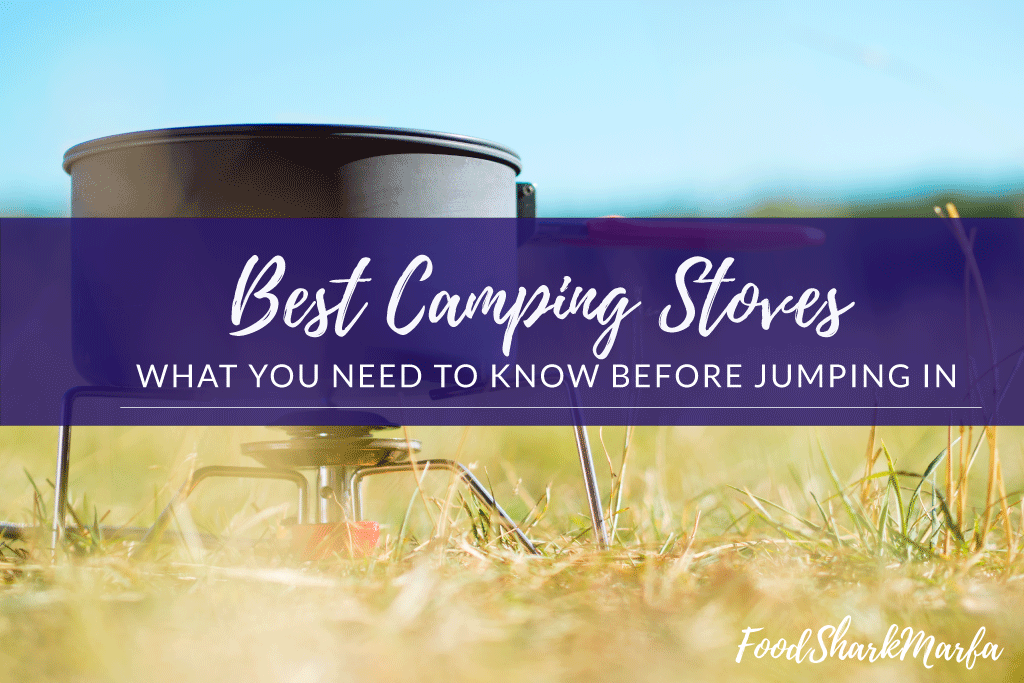
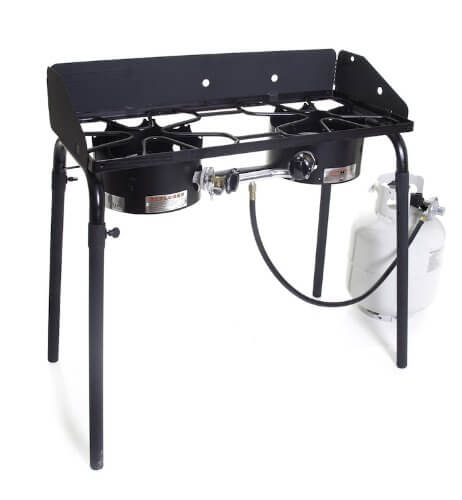
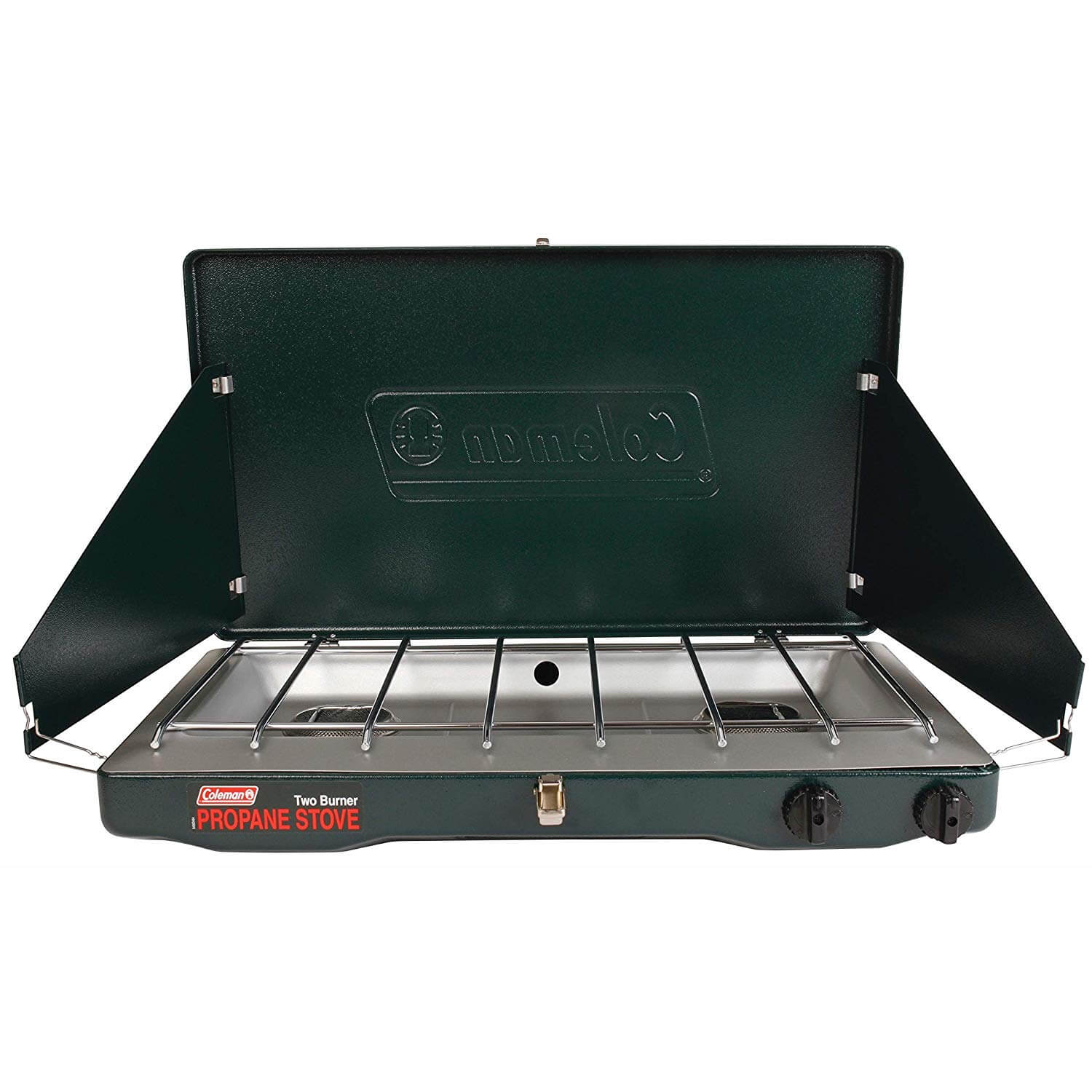
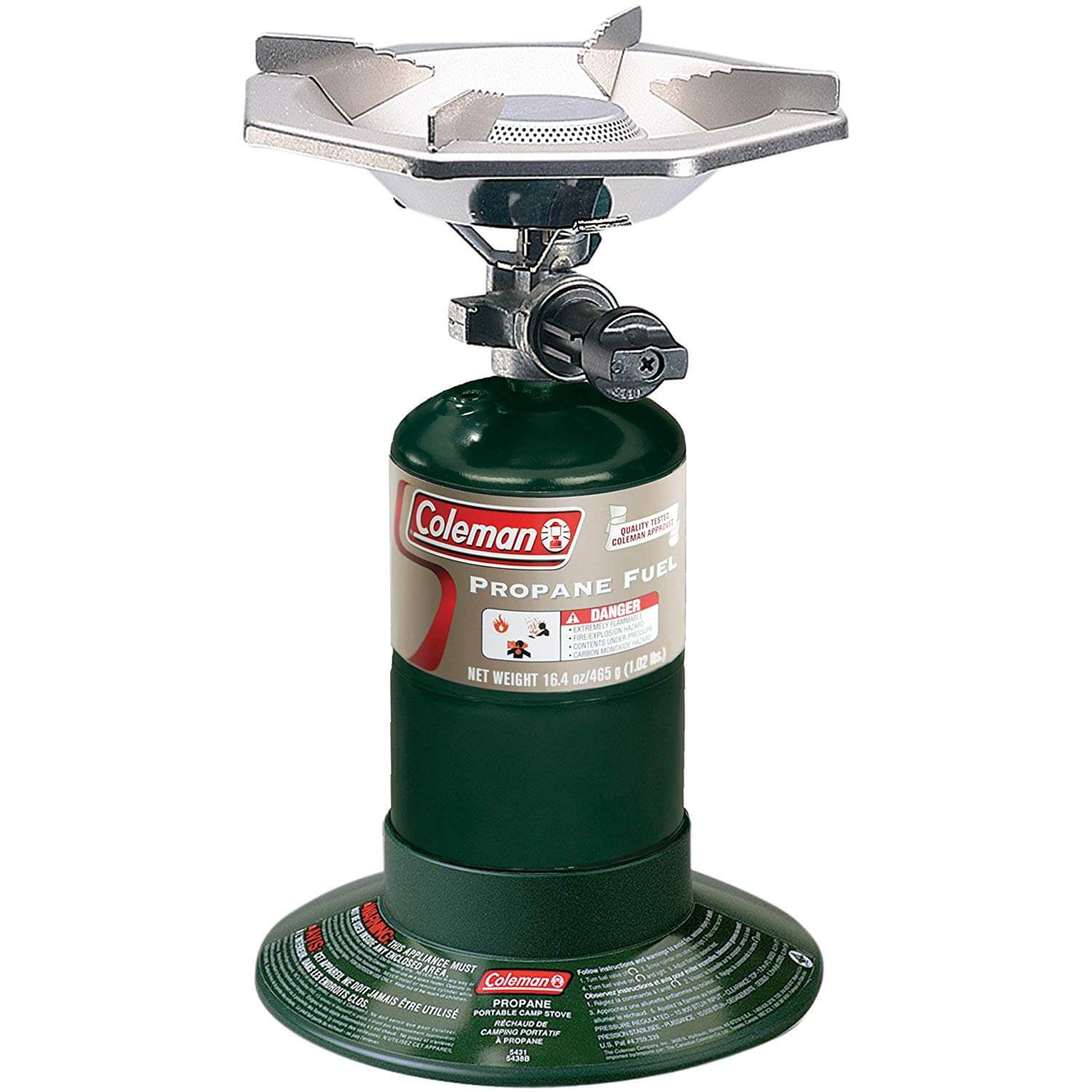
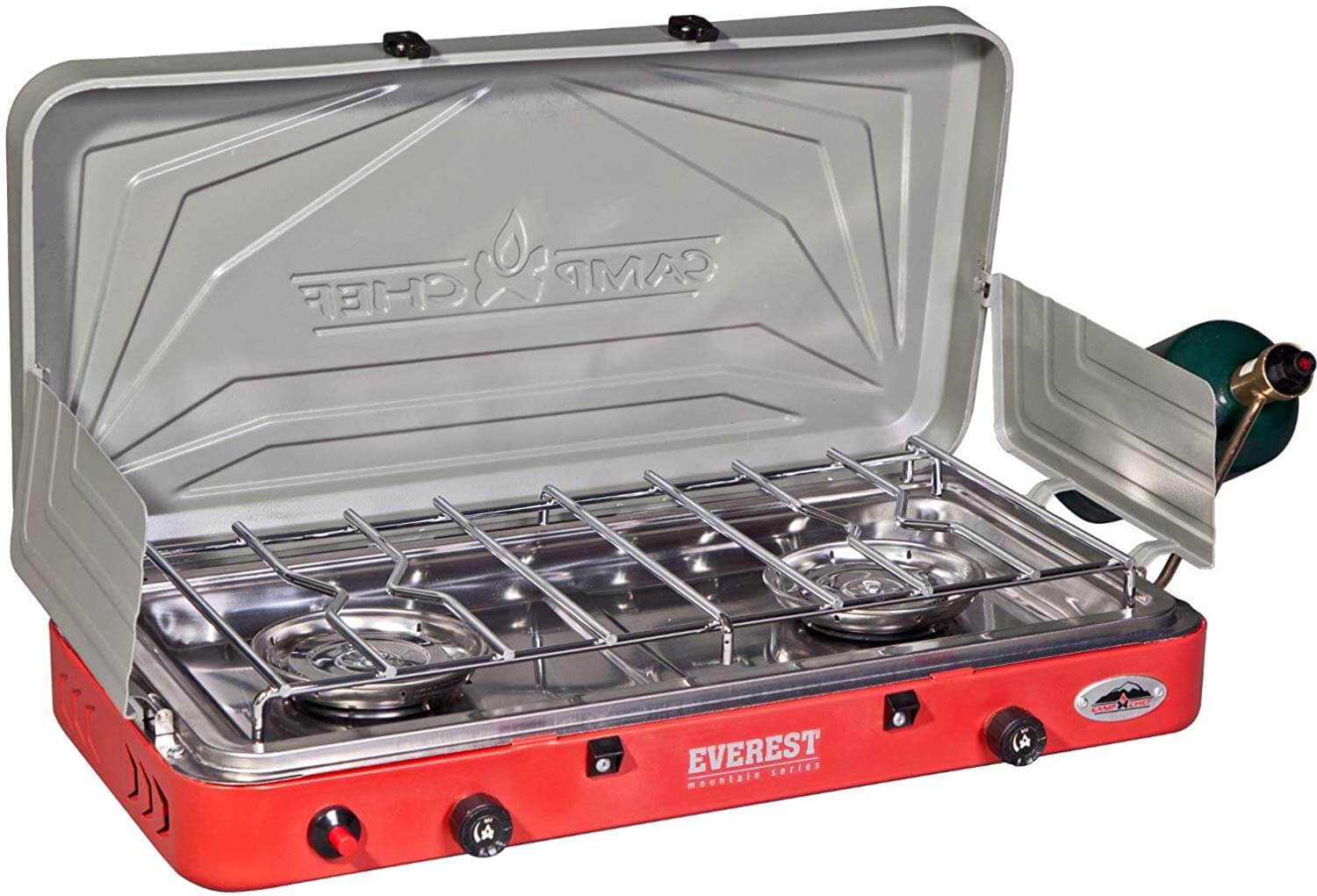
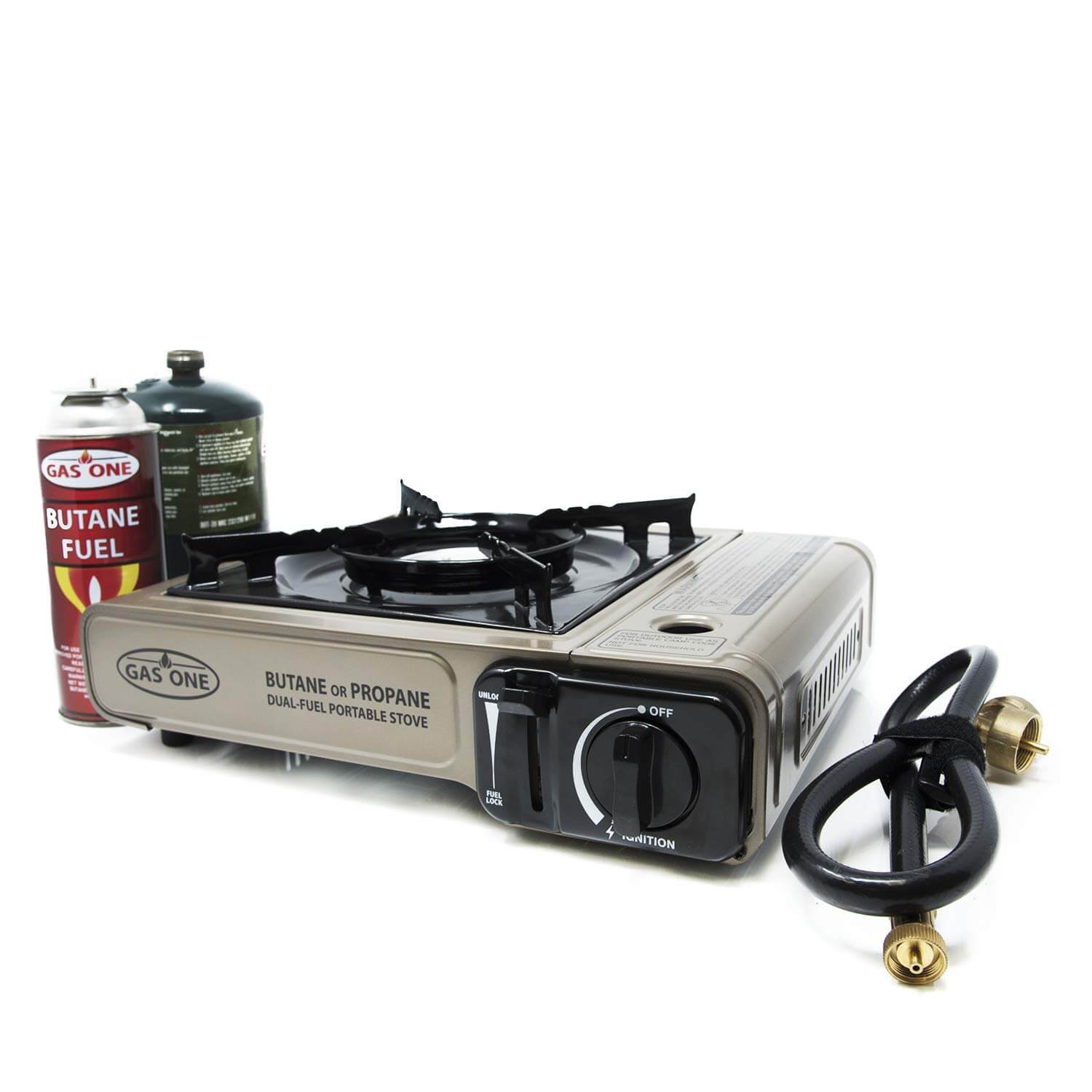
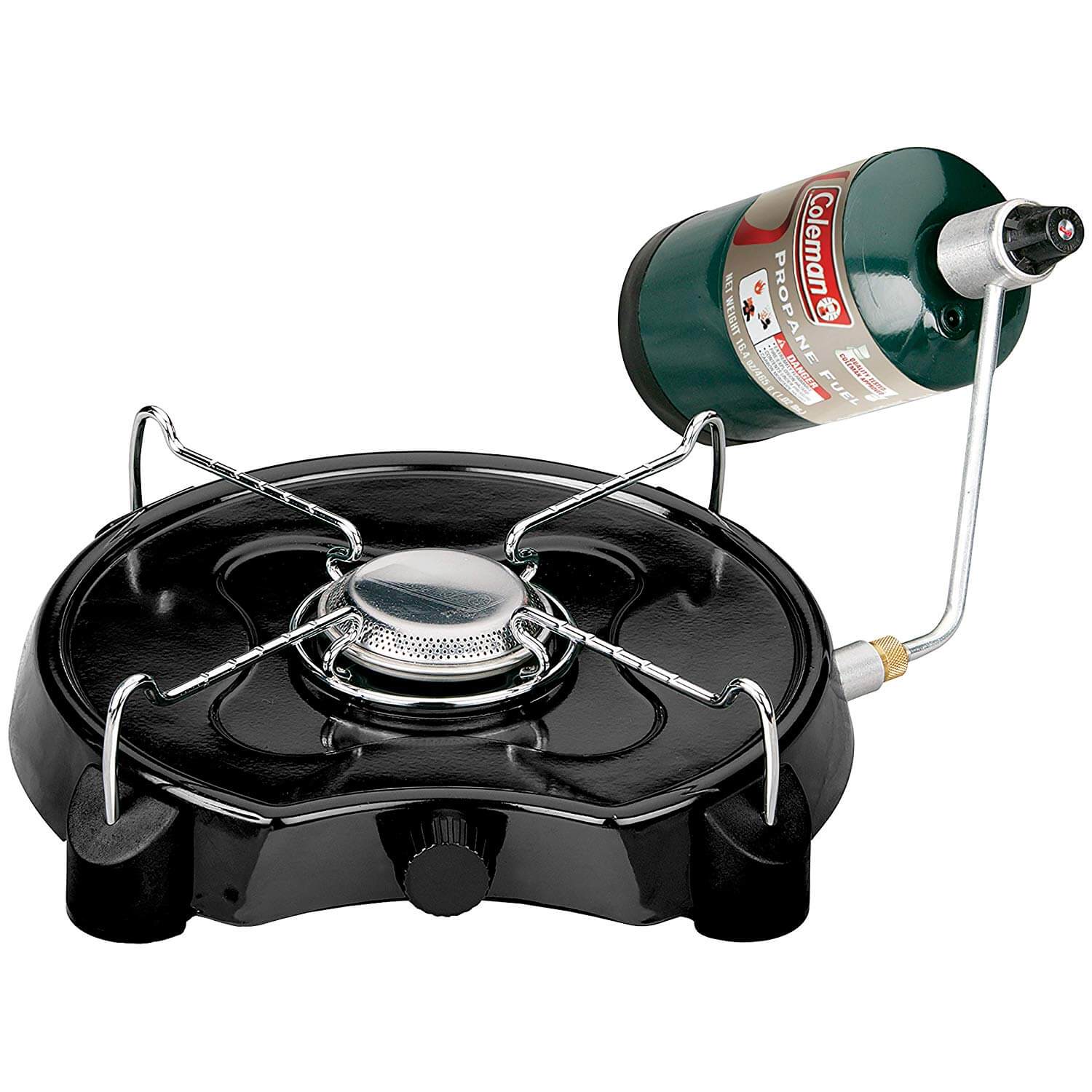
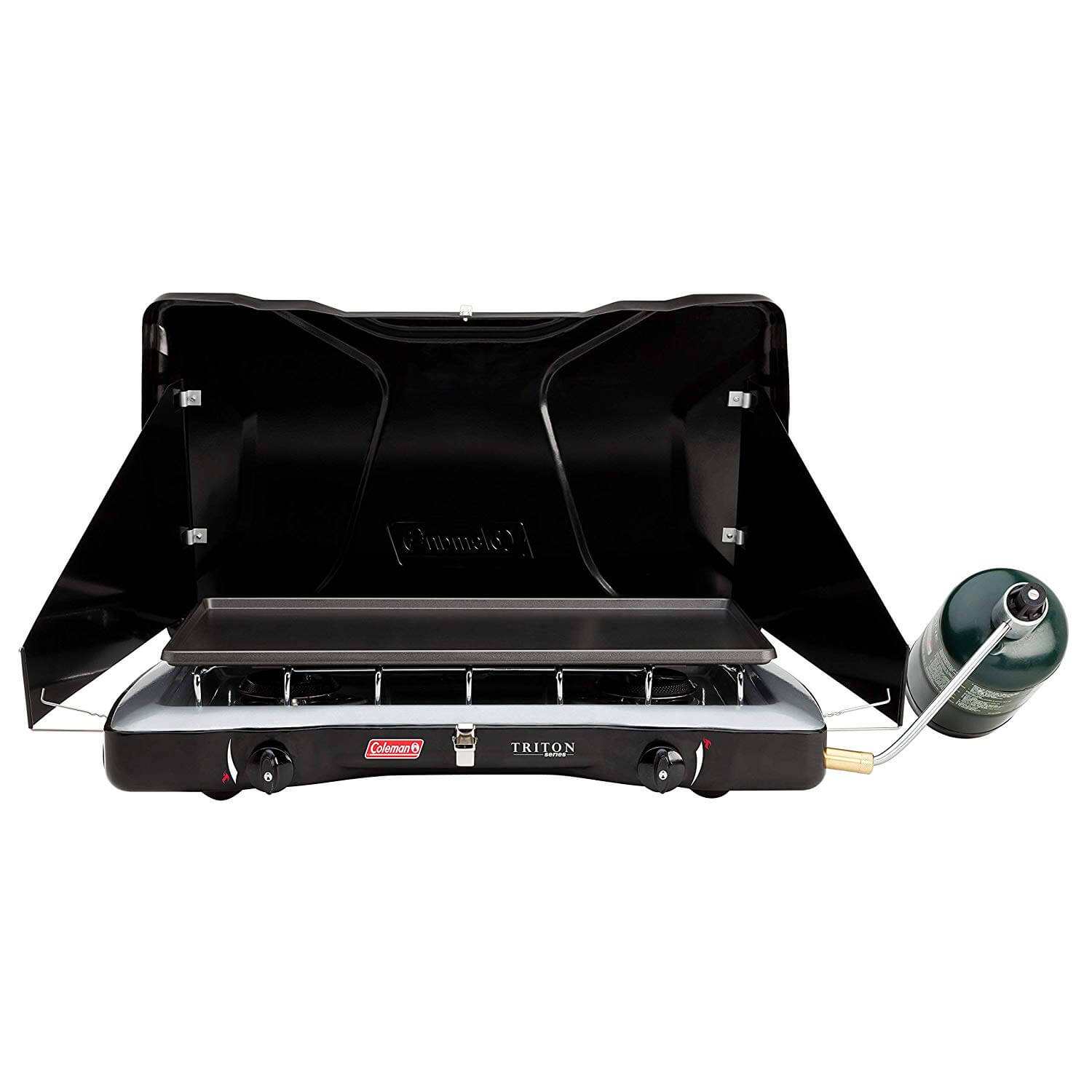

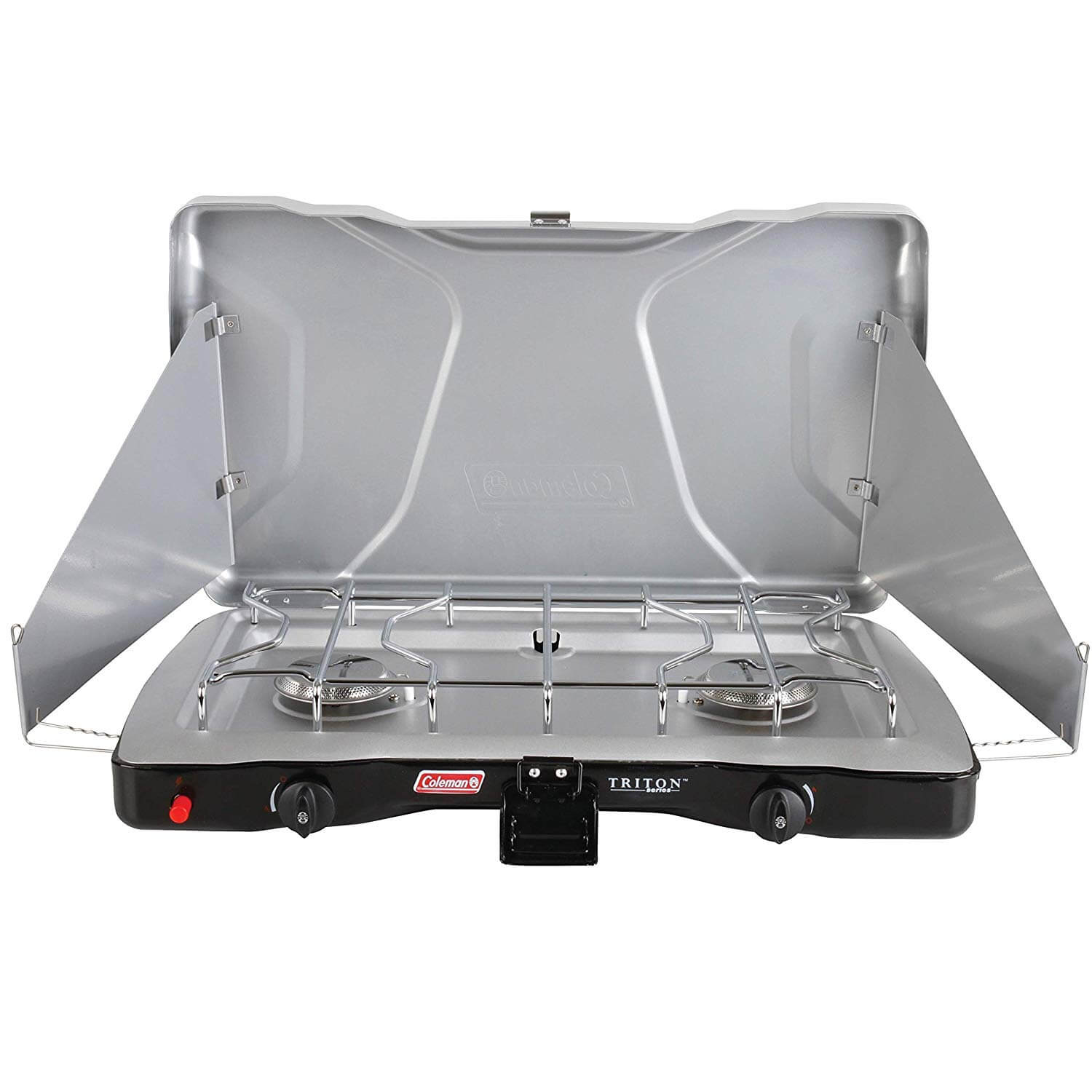
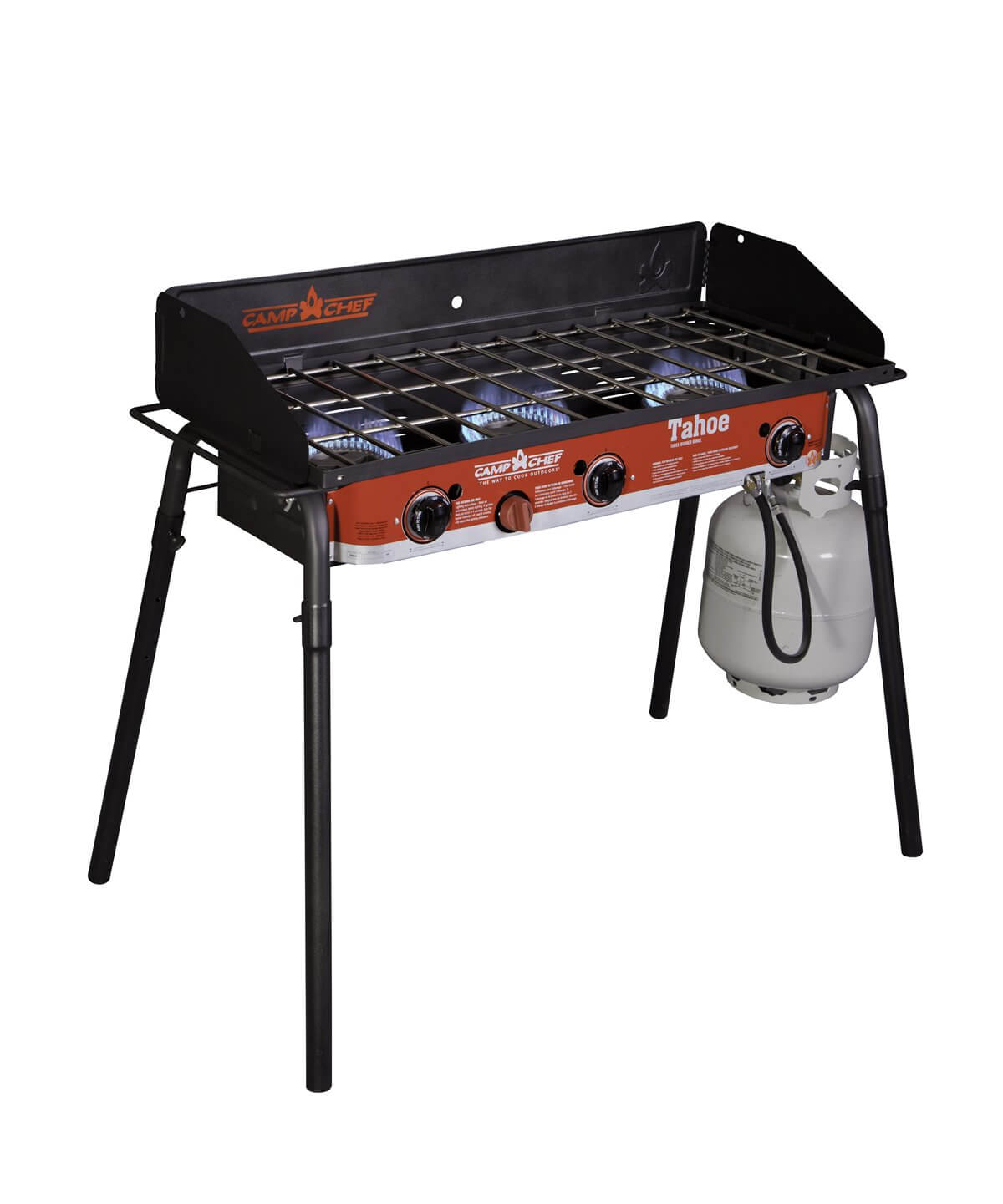

Related Posts
The 10 Best Kitchen Tongs in 2023
The 10 Best Avocado Oils for Cooking in 2023
The 18 Best Fruit Infuser Water Bottles in 2023